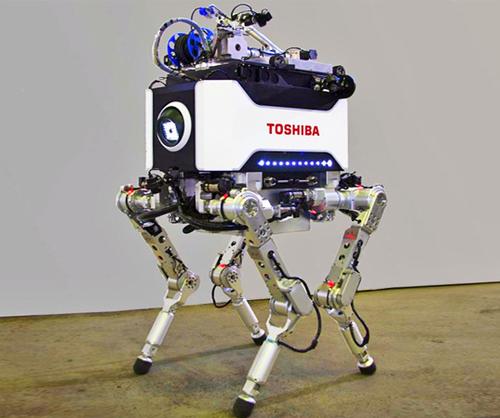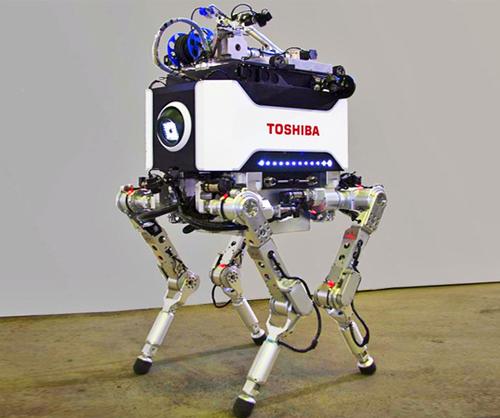December 18, 2012

After the March 2011 tsunami and earthquake and the Fukushima nuclear power disaster, the Japanese government was embarrassed to have to ask for robots from other countries to help assess the damage. Japan is well known for its advances in robot technology, but not for these types of applications.
Now Toshiba has designed and built a four-legged robot to conduct investigative and recovery work in a number of locations that are too dangerous for humans, such as the reactor buildings of the Fukushima Dai-Ichi No. 1 nuclear plant.
Though the country's Future Robotics Technology Center (fuRO) at the Chiba Institute of Technology has conducted R&D for two generations of search-and-rescue robotics, none of its robots could be deployed at the time of the disaster inside the reactor with its very high radiation levels. Rescue robots were sent over from the US and other countries. Most notably, iRobot's 510 PackBot was the first robot to enter the damaged Fukushima reactor, and it provided the initial glimpses inside those buildings after the disaster.

Since then, the Japanese government has been testing several robotic technologies that will help with future disasters. These technologies may be able to help with the attempts to assess damage in the disabled Fukushima reactor buildings. We've reported on the Sakura fuRO robot, which is designed to explore the basement areas of the reactor (where cooling water leaks are suspected) and collect information on the damage. This robot, which runs on tank-like treads, was designed to be especially adept at negotiating stairs and ramps.
Toshiba's remote-controlled robot has four segmented, jointed legs. The joints are controlled by a dedicated movement algorithm that lets the robot avoid obstacles, climb stairs, and navigate uneven surfaces such as rubble-strewn floors. The company said in a press release that the design will give the robot "access into areas that is challenging to be reached by wheeled robots or crawlers."
The short video below shows the tetrapod walking on a flat surface, climbing stairs, and detaching its secondary camera. The movement of the limbs is reminiscent of the Big Dog and other robots built by Boston Dynamics to emulate animal movement. Overall, the robot looks to be a lot less stable than the much smaller Sakura fuRO, with its lower center of gravity and treads.
The new robot integrates a camera and dosimeter, as well as a folding arm designed to release the secondary camera, which is mounted on a smaller companion robot. The smaller bot (which remains connected by cable to the main robot) is launched from the main tetrapod so it can take pictures of places that the main robot cannot enter, such as tubes, narrow passageways, or areas with large chunks of rubble.
The main robot weighs 65kg (143.3lb) and measures 624mm (24.5 inches) long by 587mm (23.1 inches) wide by 1066mm (41.9 inches) high. It has a walking speed of 1km/hour (0.62mph). The detachable secondary robot/camera weighs 2kg (4.4lb) and measures 313mm (12.3 inches) long by 327mm (12.8 inches) wide by 47mm (1.8 inches) high. It moves at a speed of 200m/hour (0.12mph).
Toshiba said in the release that it "will continue research and development on capabilities and operation of the robot so as to enable it to position and install shielding, stop flows of water and remove obstacles."
Related posts:
About the Author(s)
You May Also Like



